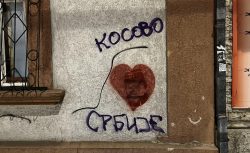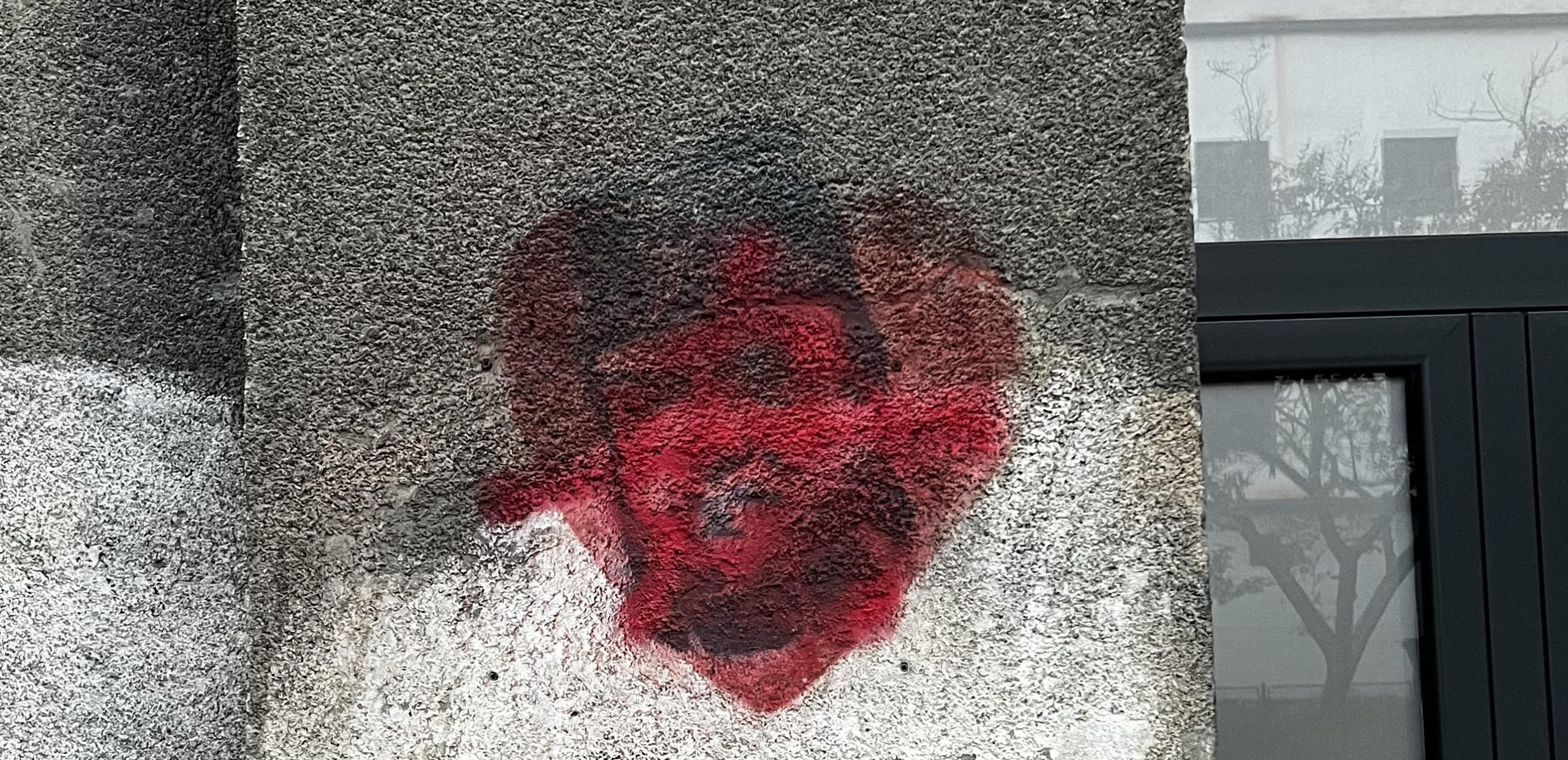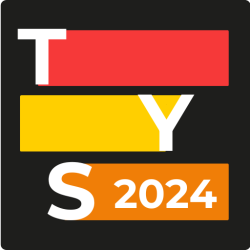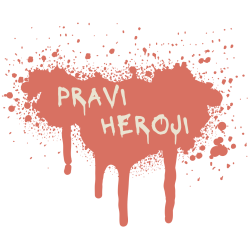Graffiti Chronicles: Subconscious Nationalistic Dialogues in Belgrade
A Hike Through Graffities – Daily Reminders of Serbia and Kosovo:

To take some photos for the article, I took a walk through the curated show of nationalistic graffiti around Belgrade. I would note that most of the prominent ones tend to be about Serbia, being Serbian, wars in the 90s, people that passed (Including murals), a lot of personal confessions, and specifically about Kosovo. All of the ambiguous messages blend in and fade out but the very clear ones almost scream at me. I can’t tell if the writings on the walls are real messages, cause some feel like a threat. Is it written as a form of therapy through artistic expression? Or it’s simply a form of self-regulation – you can’t express your needs so you tend to be mean-intentioned to others. I might never know the answer, and I am not here to judge, but what I did gather through my walk which turned into a hike through the facades, tunnels, and steep street curves…Could be a story of a collective psyche.
The Danger of Dismissing Symbols:
I can say “Swastika is just a symbol”. And you would look at me like I am an idiot. While graffiti may seem like mere visual expression, dismissing them for the message they carry or what the drawing represents is very dangerous. Recognizing their influence is the first step toward making choices aligned with our authentic values and beliefs.
If we look past the artistic expression, the streets are carrying political undertones that we expose ourselves to daily. Graffiti becomes a vessel for political commentary, and willing or unwilling to participate, we become the audience. The subconscious impact of these symbols should not be underestimated, as they shape our perspectives on issues such as the complex relationship between Serbia and Kosovo.
The Subtle Influence of Visual Stimuli:
I would like to draw your attention to two psychological phenomena: incidental learning and mere exposure effect.
Incidental learning highlights how individuals absorb information from their surroundings without conscious effort. The mere exposure effect, identified by psychologist Robert Zajonc, elucidates how repeated exposure to stimuli can create familiarity and, subsequently, a preference.
I understand how these two general frames might seem confusing but they are easily applicable and understood through our topic. If you continuously see visual stimuli – graffiti, telling you “Ratko Mladić a Serbian hero” or “when the military returns to Kosovo”, your subconscious mind could adopt the preference towards it even if you haven’t consciously tried to engage with it.

If you did not study about the history and the events that the messages on the graffiti entail (mostly related to the wars of the 90s as previously mentioned) you can’t know and choose another perspective to believe in. Can you?
When I say “study about the history and the events” I do mean – have independent research backed by academic journals or attend schools and non-traditional educational workshops specific to the topic. Because the knowledge you have from the primary and high school systems, your peers, and parents is (most likely) watered down, washed out, and just completely replaced with propaganda. Even if you rely on the knowledge you gathered, and perceive it to be true, there is a possibility you are still manipulated by your subconscious just from the things you see on a regular basis. This can be paralleled to how marketing campaigns and brands manipulate your buying preferences, or closer to our cause – how political campaigns work…We should have a whole separate talk about the media.
Conclusion:
Maybe next time we can go for a walk together, talk about the weather, and notice the graffiti-coded streets of Belgrade. I’d love to know what they remind you of, and maybe you would ask me what I think about them. I’d start by telling you about their silent impact that steered up some pretty loud heads. Many activists are trying to unravel the lies that some of the graffiti
represent or the dangers of the attitudes they evoke. Many people are trying endlessly to have a pretty wall without a war criminal on it. Then I would ask you why is that so hard to achieve, and why are all of these hate-ridden graffiti everywhere? It probably isn’t you and me that are making it, but do we allow it? And who has a desperate need to make the graffiti so omnipresent and hard to get rid of?

In these unspoken dialogues, our subconscious absorbs narratives that shape our perceptions and our future. I believe it is an imperative for both you and me to be conscious consumers of the visual tales that surround us, and hopefully, this is the first step to do so.
















